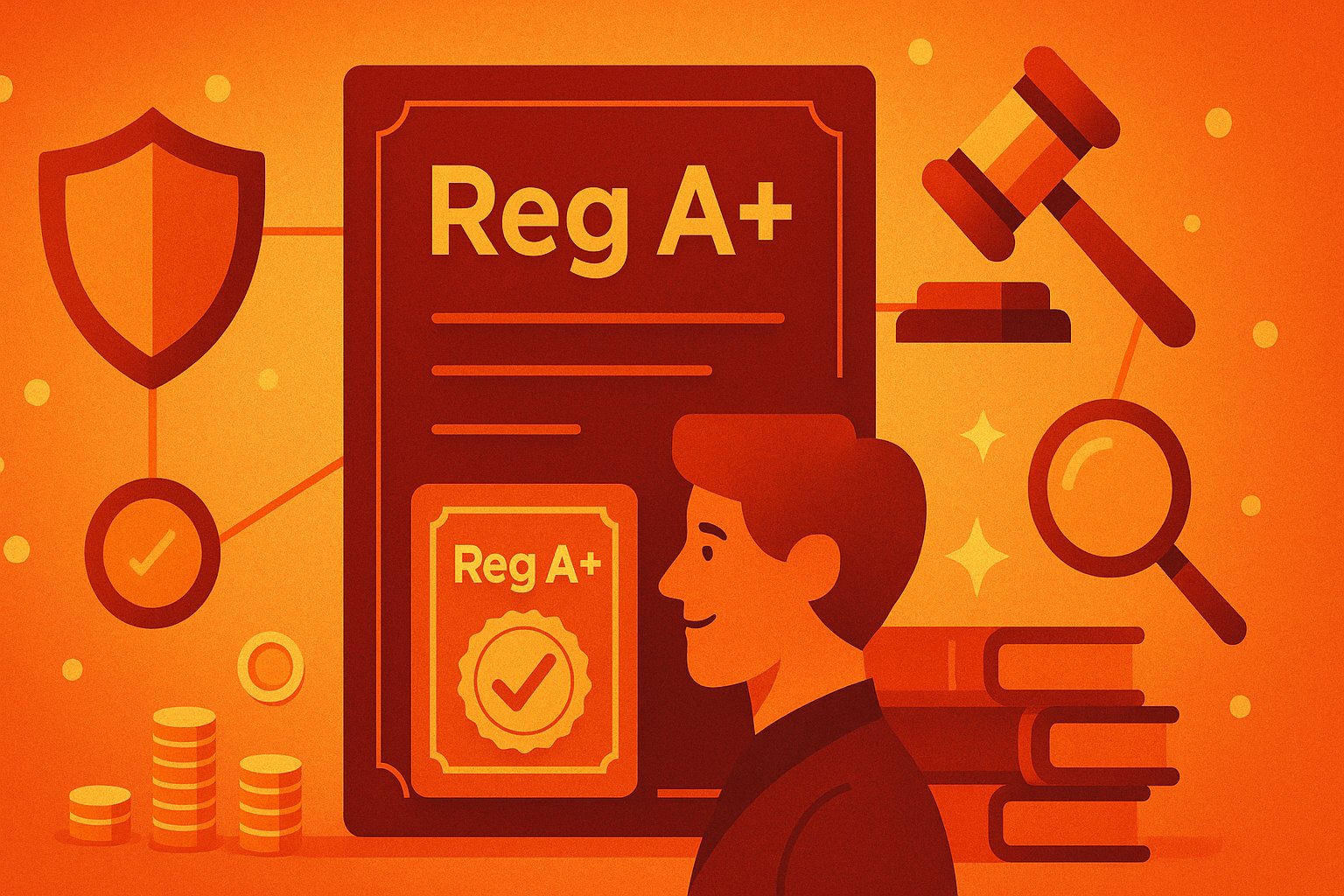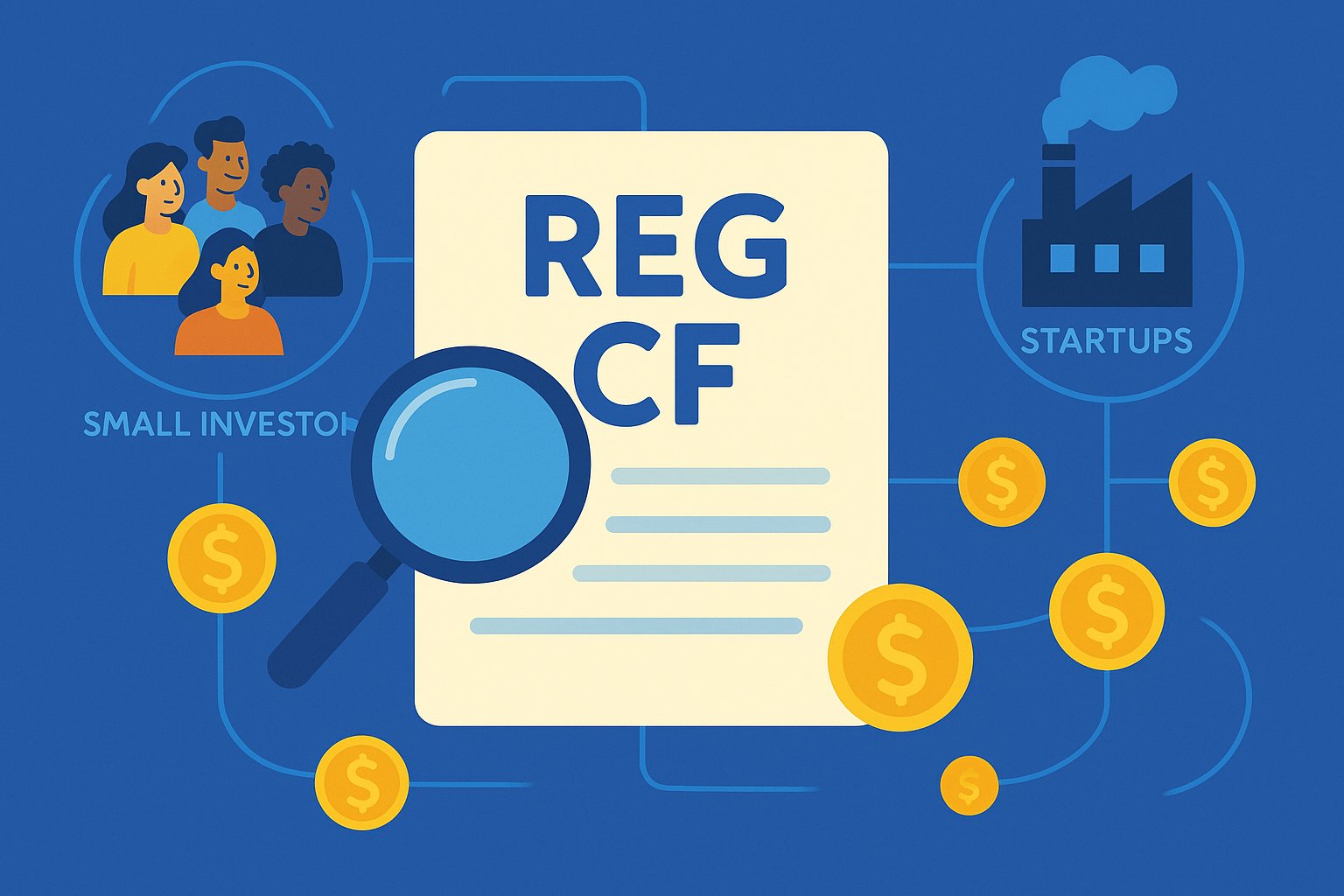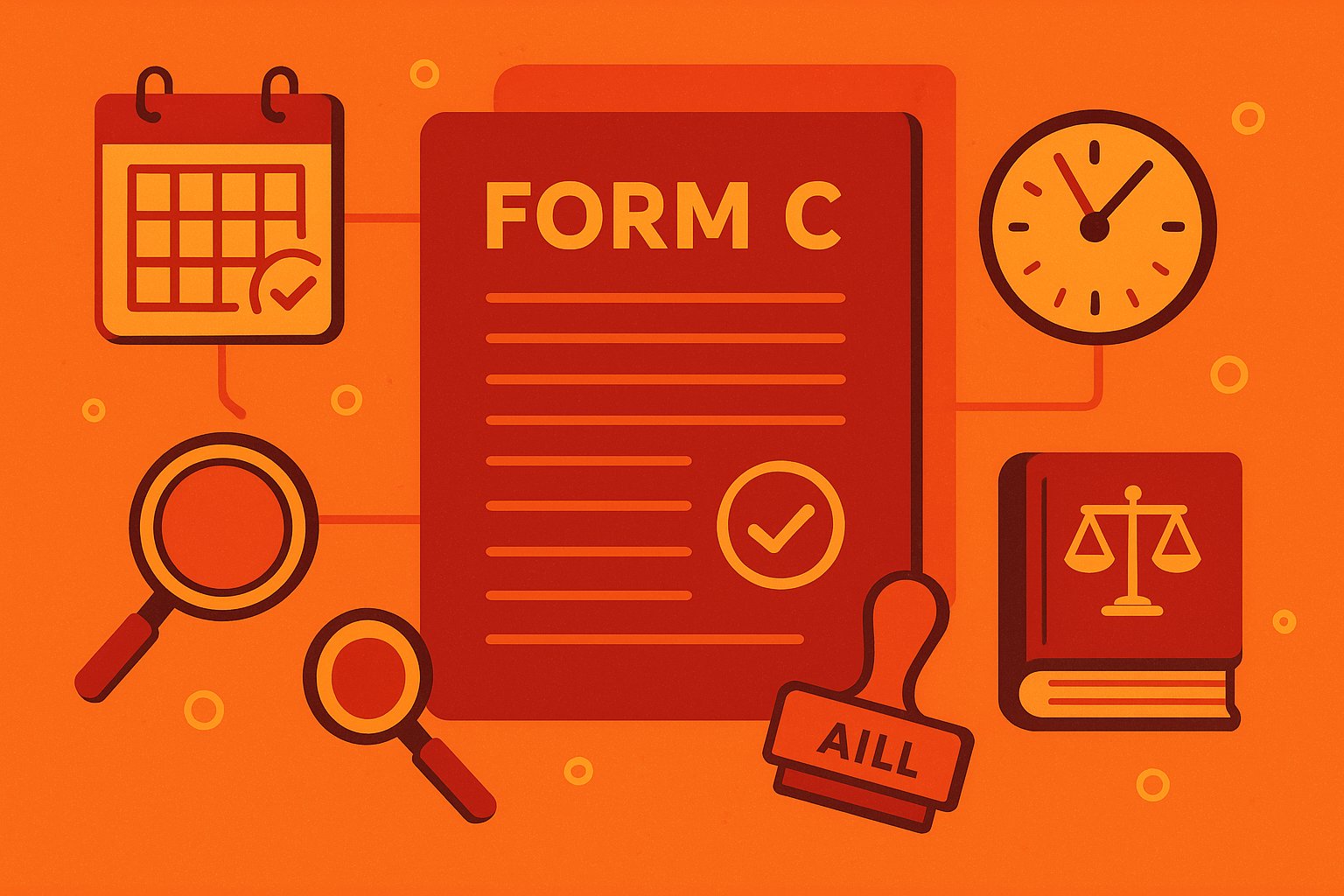Opening the Gateway to Expanded Capital: Understanding Reg A+ in Crowdfunding
Regulation A+, often abbreviated as Reg A+, represents a significant evolution in the world of crowdfunding and small-cap finance, offering companies an intermediary path between private offerings and full public registrations. Introduced as part of the JOBS Act in 2015 and finalized by the Securities and Exchange Commission (SEC) in 2015–2016, Reg A+ enables issuers to raise up to $75 million in a 12-month period from both accredited and non-accredited investors. This framework bridges the gap for growing enterprises that require more capital than permitted under Regulation Crowdfunding (Reg CF) but are not yet prepared for the rigorous demands of an initial public offering (IPO). By combining scaled disclosure requirements with broad investor access, Reg A+ has unlocked a new realm of fundraising possibilities for emerging businesses, real-estate ventures, and community-oriented projects. At its core, Reg A+ is designed to balance two critical objectives: fostering capital formation for small and mid-sized enterprises and safeguarding investor interests through tailored disclosure and regulatory oversight. Companies electing the Reg A+ route prepare an offering statement—similar to a mini-prospectus—that the SEC reviews and qualifies. Once qualified, the issuer can market its securities nationwide, solicit investment through online platforms or traditional channels, and access a base of everyday investors alongside sophisticated backers. The simplified process and reduced compliance burden compared to a traditional IPO make Reg A+ an attractive choice for businesses seeking between $20 million and $75 million to accelerate growth, expand operations, or advance innovative products.
The Evolution and Purpose of Regulation A+
Reg A+ traces its origins to Regulation A, a lesser‐used exemption from full SEC registration that dated back to 1936. Despite its initial promise, the original Reg A exemption suffered from low adoption due to restrictive offering limits, divergent state blue‐sky requirements, and the absence of a clear framework for nationwide solicitation. Recognizing these shortcomings, lawmakers incorporated improvements into the Jumpstart Our Business Startups (JOBS) Act of 2012, instructing the SEC to modernize Reg A. After extensive rulemaking and public commentary, the SEC adopted Reg A+ in 2015, bifurcating the exemption into two tiers to accommodate varying capital needs and compliance capabilities.
The overarching purpose of Reg A+ is to democratize capital markets by reducing barriers for growing companies while preserving investor protection. By raising the offering cap from $5 million to $20 million (Tier 1) and further to $75 million (Tier 2), and by preempting state‐level registration in Tier 2 offerings, Reg A+ fosters a more efficient, uniform system for cross‐state fundraising. The qualification process is more streamlined than a full registration statement, and ongoing reporting obligations are lighter than those imposed on publicly traded companies, making Reg A+ a versatile tool for a wide spectrum of issuers—from technology startups and consumer product innovators to local real‐estate developers and renewable energy ventures.
Tier 1 vs. Tier 2: Choosing the Right Path
Reg A+ offerings are categorized into two distinct tiers, each with its own fundraising limits, disclosure requirements, and state registration implications. Tier 1 permits issuers to raise up to $20 million within a 12-month period. These offerings must satisfy both SEC qualification and state “blue sky” registration in each jurisdiction where securities are sold. For smaller businesses with limited compliance budgets seeking moderate capital, Tier 1 can provide a manageable stepping stone while maintaining broader investor access. Tier 2 elevates the ceiling to $75 million and preempts state registration requirements, streamlining the process for issuers targeting larger raises. However, Tier 2 offerings demand more rigorous financial disclosures, including audited financial statements, and impose ongoing reporting obligations akin to those faced by public companies. While Tier 2 reduces the burdens of navigating multiple state regulators, businesses must weigh the higher preparation costs—such as audit fees and legal expenses—against the benefit of accessing a wider investor base without state‐by‐state filings.
Eligibility and Structuring a Reg A+ Offering
To pursue a Reg A+ offering, an issuer must be a U.S. or Canadian company domiciled in the United States, structured as a corporation, limited liability company (LLC), or partnership. Non-U.S. issuers may qualify if they establish a U.S. domicile and meet specified requirements. Certain issuers are ineligible, including investment companies, private funds, and companies with no specific business plan or purpose. Prior to qualification, companies must prepare an offering statement on Form 1-A, which comprises three parts: Part I (Notification), Part II (Offering Circular), and Part III (Exhibits). The Offering Circular details the company’s business model, financial condition, management team, risk factors, use of proceeds, and plan of distribution.
Structuring the Reg A+ offering also involves deciding the type of securities to offer—common stock, preferred stock, debt instruments, or other securities—and setting the minimum and maximum investment thresholds. Establishing an appropriate pricing strategy and valuation is critical, as the offering circular must articulate how the valuation was determined and why the price is fair to investors. Companies often engage underwriters or broker-dealers for assistance in pricing, marketing, and syndication, although Reg A+ does not mandate the use of underwriting services.
The Qualification Process and SEC Review
Once the Form 1-A is drafted, it is filed with the SEC along with the required exhibits, such as audited financial statements (for Tier 2), underwriting agreements, and legal opinions. Upon filing, the SEC conducts a substantive review to ensure the offering circular provides full and fair disclosure. This review typically entails rounds of comment letters, during which the SEC requests clarifications, additional disclosures, or corrections. The review cycle may last several months, depending on the offering’s complexity and the issuer’s responsiveness.
When the SEC’s Division of Corporation Finance deems the offering statement compliant, it issues a qualification order, allowing the issuer to “go effective.” From that point forward, the issuer can circulate the Offering Circular, solicit subscriptions, and accept investor funds. Issuers must include the SEC’s qualifier legend on all offering materials, signaling to investors that the offering has met regulatory standards. For Tier 2 offerings, qualification also preempts state securities laws, enabling a nationwide solicitation without the need for separate state blue sky registrations.
Disclosure Requirements and Ongoing Reporting
A hallmark of Reg A+ is its tiered disclosure regime. Tier 1 issuers must provide semi-annual and annual financial statements certified by management, while Tier 2 issuers submit audited annual financials and reviewed semi-annual statements. Both tiers require detailed risk factor discussions, executive compensation disclosures, and statements about related-party transactions. The Offering Circular must also cover the use of proceeds in granularity, explaining how funds will be allocated across research and development, marketing, operational expansion, or debt servicing.
Beyond the initial qualification, Tier 2 issuers are subject to ongoing reporting obligations. This includes filing an annual report on Form 1-K within 120 days after the fiscal year-end, semi-annual reports on Form 1-SA within 90 days of the first six months of the fiscal year, and current event reports on Form 1-U for material developments such as mergers, significant contract awards, or changes in executive leadership. Tier 1 issuers may choose to comply with ongoing reporting voluntarily or upon exceeding the Tier 1 fundraising cap. The structured reporting framework provides investors with periodic insights into an issuer’s performance, maintaining transparency throughout the life of the offering.
Marketing, General Solicitation, and Advertising
One of the key innovations of Reg A+ compared to certain other exemptions is the ability to engage in general solicitation and advertising. Issuers qualified under Reg A+ can publicly market their offerings through websites, social media, email blasts, and even televised or print advertisements. However, all marketing materials must be consistent with the Offering Circular and include the SEC qualifier legend. Any deviations or promotional claims not addressed in the official disclosure can lead to SEC enforcement actions for materially misleading statements. Platforms and broker-dealers often collaborate with issuers to design integrated marketing campaigns that raise visibility while ensuring compliance. Investor education initiatives, such as webinars, FAQs, and interactive investor portals, help prospective subscribers understand the business model, risks, and terms of the offering. Maintaining a careful balance between compelling storytelling and rigorous adherence to disclosure protocols is essential to avoid allegations of ramping or hyping an offering beyond what the offering circular supports.
Investor Protections and Limitations
Although Reg A+ allows investment from both accredited and non-accredited investors, certain protections are embedded to mitigate risk. Unlike Regulation Crowdfunding’s stringent investment caps tied to income and net worth, Reg A+ imposes no statutory limits on how much an individual investor can purchase. However, individual issuers or platforms may implement their own minimum or maximum subscription thresholds. Issuers often set minimum investment amounts to ensure an economically efficient base of shareholders, while maximum per-investor caps can help maintain a manageable shareholder registry.
The mix of non-accredited and accredited investors brings diversity to the capital base but also underscores the importance of robust disclosures and investor education. The Offering Circular’s extensive risk disclosure section, investor Q&A resources, and mandatory waiting periods between the date of qualification and the commencement of sales serve to guard against hurried or uninformed investment decisions. Investors should also consider the liquidity constraints of Reg A+ securities, which typically trade on alternative trading systems (ATS) or secondary platforms with limited volumes, making exit planning a critical component of the investment decision.
Costs, Fees, and Broker-Dealer Involvement
Conducting a Reg A+ offering incurs various costs, including legal fees, accounting and audit expenses, SEC filing fees (which vary with the aggregate offering amount), and marketing expenditures. Tier 2 offerings, with their demand for audited financials and ongoing reports, tend to be more resource-intensive than Tier 1 offerings. Many issuers engage broker-dealers or “participating broker-dealers” to assist with underwriting, sale distribution, and investor relations. Broker-dealers charge fees or commissions—often structured as a percentage of the amount raised—that contribute to the overall cost structure but can also enhance an issuer’s access to investor networks and capital.
Selecting the right intermediary involves evaluating the broker-dealer’s track record with Reg A+ offerings, its distribution capabilities, and its expertise in regulatory compliance. Some broker-dealers specialize in niche sectors—such as real estate or blockchain-related ventures—while others offer full-service underwriting and market-making support. The decision to engage underwriting services versus conducting a self-managed offering should align with the issuer’s strategic goals, budget constraints, and desired speed to market.
Success Stories and Real-World Applications
Since Reg A+ became effective, a diverse array of companies has harnessed its potential. In the renewable energy sector, community solar projects have raised tens of millions of dollars from local residents seeking both financial returns and environmental impact. Consumer brands—including fashion lines, beverage startups, and specialty food producers—have leveraged Reg A+ to build a community of brand ambassadors who double as investors. Tech ventures, such as software providers and hardware manufacturers, have used Reg A+ to fund product development while pre-selling units to their shareholder base. One illustrative case involved a craft brewery that sought $10 million under Tier 2 to expand its production facilities and distribution network. By presenting a compelling Offering Circular, engaging a niche broker-dealer with deep ties in the craft beverage industry, and hosting tasting events coupled with investment seminars, the brewery not only met but exceeded its target within weeks. The campaign demonstrated how Reg A+ can galvanize community support, drive media coverage, and strengthen brand loyalty—all while raising substantial growth capital within a compliant framework.
Emerging Trends and Future Outlook for Reg A+
The Reg A+ landscape continues to evolve as market participants, regulators, and technology innovators refine their approaches. Proposals to raise the Tier 2 offering cap beyond $75 million are under consideration by the SEC, reflecting inflationary pressures and growing issuer demand. Blockchain-based securities and digital asset tokenization are entering the Reg A+ conversation, with pilot projects exploring how smart contracts and decentralized ledgers could streamline reporting, trading, and shareholder communications.
Secondary trading platforms tailored to Reg A+ securities are emerging, offering investors more liquidity options and price discovery mechanisms. Regulatory sandboxes and pilot programs could further align Reg A+ with global fintech initiatives, facilitating cross-border offerings and harmonized disclosure standards. For issuers and investors alike, staying attuned to these developments—and participating in industry forums or trade associations—will be key to capitalizing on new opportunities and navigating prospective regulatory adjustments.
Charting Your Reg A+ Strategy with Confidence
Regulation A+ stands as a versatile, powerful tool in the modern crowdfunding arsenal, offering a balanced pathway for companies seeking significant growth capital beyond the limits of Reg CF yet shy of a full IPO. By understanding the distinctions between Tier 1 and Tier 2 offerings, mastering the SEC qualification and disclosure processes, and engaging the right intermediaries, issuers can mount compelling campaigns that resonate with a broad investor community. Investors, in turn, gain access to promising ventures with a regulated framework designed to illuminate risks and facilitate informed decisions. Successfully navigating Reg A+ requires strategic planning, disciplined compliance, and a commitment to transparent communication. From crafting an engaging Offering Circular to orchestrating a coordinated marketing campaign, each step must align with regulatory mandates while showcasing the company’s value proposition. As Reg A+ continues to gain traction and adapt to emerging trends—such as digital assets and expanded offering caps—stakeholders who embrace best practices and maintain agility will be poised to lead the next wave of crowdfunding innovation. In doing so, they will not only realize their own growth ambitions but also contribute to the broader democratization of capital markets in an increasingly interconnected world.




